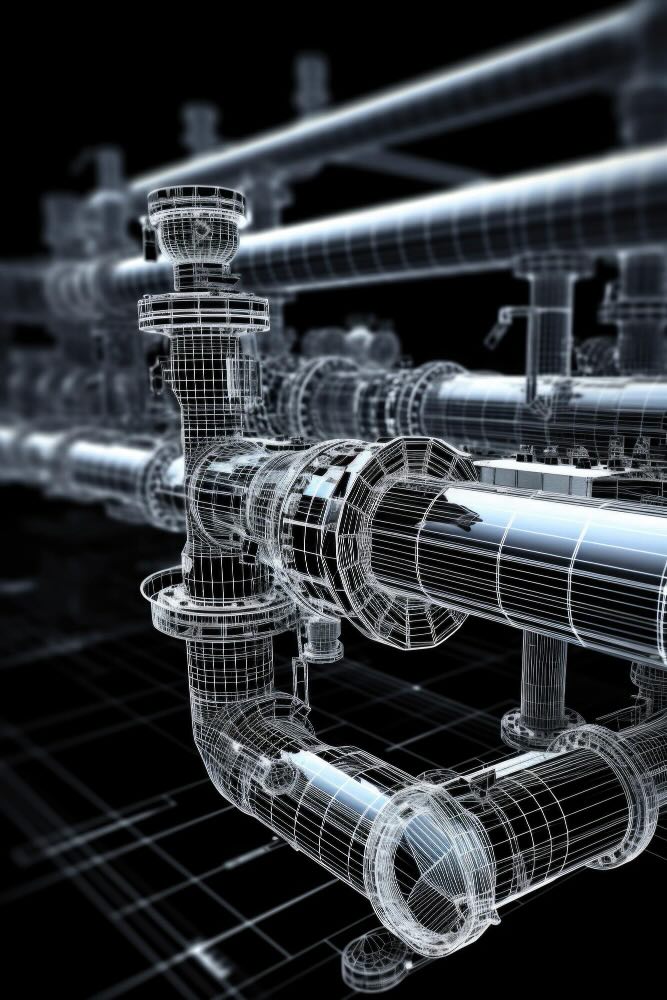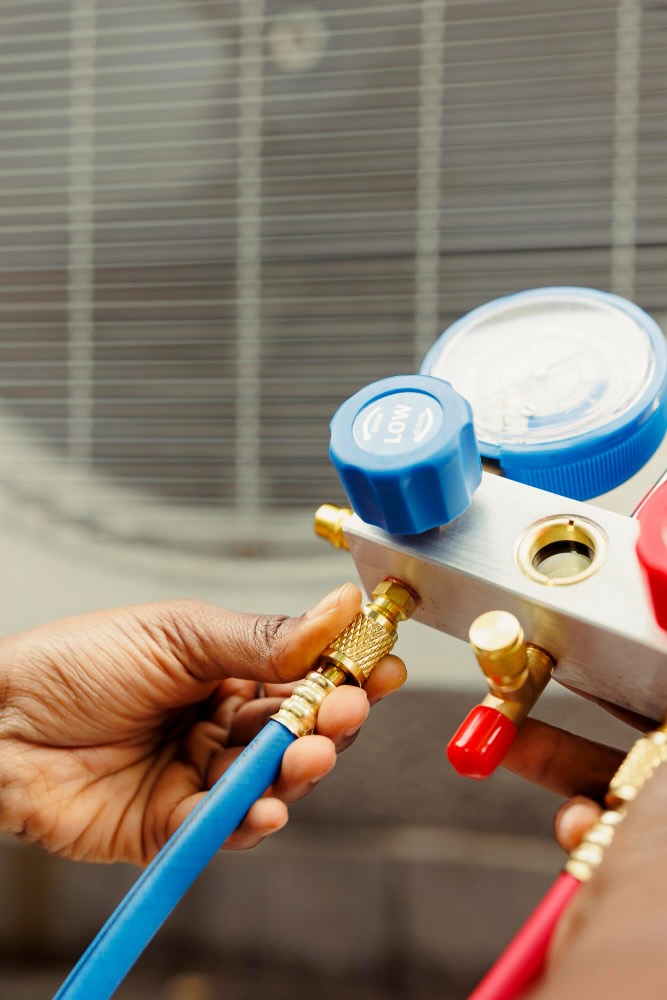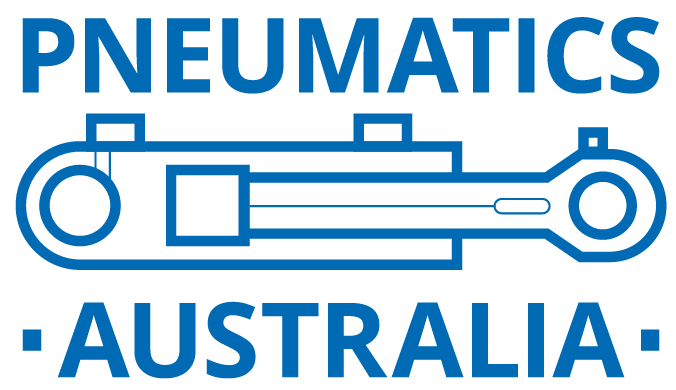Pneumatic Parts and Fittings (Sydney)
Having access to pneumatic parts and fittings in Sydney is important for businesses in the industrial sector. From manufacturing and packaging to food processing and transportation, pneumatic systems play a vital role in powering various applications across industries.
Pneumatics Australia understands the importance of efficient and dependable pneumatic solutions, which is why we have been dedicated to providing you with the best pneumatic components for over three decades. As Australia’s largest pneumatics distributor, we offer an extensive range of premium pneumatic products in Sydney, including valves, cylinders, and fittings, to meet your diverse needs.
Our goal is to provide you with the perfect solution for your application, whether you need a simple replacement part or a complete system overhaul.
The Working Principles of a Pneumatic System
Pneumatics systems utilise compressed air to generate and transmit power, enabling the operation of various industrial applications, such as manufacturing, packaging, and automation.
The core components of a pneumatic system include an air compressor, air tank or reservoir, air filter, pressure regulator, lubricator, and various pneumatic parts and fittings such as valves, cylinders, and tubing. These elements work together to ensure a clean, dry, and properly pressurised air supply for optimal system performance.
The air compressor draws in ambient air and compresses it to a higher pressure. The compressed air is then stored in an air tank or reservoir, which helps maintain a consistent pressure throughout the system. The air filter removes any contaminants or moisture from the compressed air, ensuring clean and dry air is supplied to the pneumatic components.
The pressure regulator controls the pressure of the compressed air, while the lubricator adds a fine mist of oil to the air stream to lubricate and protect the moving parts. The compressed air is then distributed through a network of tubing and fittings to various pneumatic components, which perform the desired mechanical actions.

The Working Principles of a Pneumatic System
Pneumatics systems utilise compressed air to generate and transmit power, enabling the operation of various industrial applications, such as manufacturing, packaging, and automation.
The core components of a pneumatic system include an air compressor, air tank or reservoir, air filter, pressure regulator, lubricator, and various pneumatic parts and fittings such as valves, cylinders, and tubing. These elements work together to ensure a clean, dry, and properly pressurised air supply for optimal system performance.
The air compressor draws in ambient air and compresses it to a higher pressure. The compressed air is then stored in an air tank or reservoir, which helps maintain a consistent pressure throughout the system. The air filter removes any contaminants or moisture from the compressed air, ensuring clean and dry air is supplied to the pneumatic components.
The pressure regulator controls the pressure of the compressed air, while the lubricator adds a fine mist of oil to the air stream to lubricate and protect the moving parts. The compressed air is then distributed through a network of tubing and fittings to various pneumatic components, which perform the desired mechanical actions.


Advantages Over Other Automation Technologies
Compared to other automation technologies, pneumatic systems offer several advantages, including:
Cost-effectiveness:
Pneumatic components are generally less expensive than their hydraulic or electric counterparts.
Simplicity:
Pneumatic systems are relatively simple to design, install, and maintain, requiring fewer complex components than other technologies.
Safety
Since pneumatic systems use compressed air rather than flammable fluids or electricity, they pose a lower risk of fire or explosion.
Reliability:
Pneumatic components are known for their durability and long service life, even in demanding industrial environments.
Speed and power:
Pneumatic actuators can provide rapid movement and high force output, making them suitable for a wide range of applications.
Advantages Over Other Automation Technologies
Compared to other automation technologies, pneumatic systems offer several advantages, including:
Cost-effectiveness:
Pneumatic components are generally less expensive than their hydraulic or electric counterparts.
Simplicity:
Pneumatic systems are relatively simple to design, install, and maintain, requiring fewer complex components than other technologies.
Safety:
Since pneumatic systems use compressed air rather than flammable fluids or electricity, they pose a lower risk of fire or explosion.
Reliability:
Pneumatic components are known for their durability and long service life, even in demanding industrial environments.
Speed and power:
Pneumatic actuators can provide rapid movement and high force output, making them suitable for a wide range of applications.

Pneumatic Parts We Offer
We offer a comprehensive range of high-quality pneumatic parts to meet your industrial automation needs.
Air Compressors
The heart of any pneumatic system, air compressors convert electrical energy into compressed air and provide the power needed to operate tools and equipment.
We carry a range of compressors to suit various applications and requirements.
Air Tanks / Reservoirs
Air tanks or reservoirs store compressed air and ensure a stable supply of air to your pneumatic system.
Our tanks are available in different sizes and materials to meet your specific requirements.
Air Filters
Protecting your pneumatic components from contaminants is essential for maintaining optimal performance and longevity.
Our air filters remove dust, dirt, oil, and moisture from the compressed air to ensure only clean and dry air reaches your equipment.
Pressure Regulators
Pressure regulators control the air pressure supplied to your pneumatic system, allowing you to fine-tune the performance of your equipment.
We offer a range of regulators with different pressure ranges and flow capacities for various applications.
Lubricators
Lubricators introduce a fine mist of oil into the compressed air stream, lubricating moving parts and reducing friction and wear.
Our inventory includes a variety of lubricators to keep your pneumatic components running smoothly.
Gauges
Gauges provide vital information about the pressure, flow, and temperature of the compressed air in your pneumatic system.
We stock both analogue and digital gauges to help you monitor system performance and troubleshoot issues.
Pneumatic Fittings We Offer
We offer a wide selection of high-quality pneumatic fittings to ensure secure and leak-free connections in your system.
Push-In Fittings
Push-in fittings (or push-to-connect fittings) provide a quick and easy way to connect pneumatic tubing without the need for tools.
Simply insert the tubing into the fitting, and the internal gripping mechanism secures it in place. Our push-in air fittings are available in various sizes, materials, and configurations, such as elbows, tees, and straight connectors.
Threaded Fittings
Threaded fittings provide secure, leak-tight connections for high-pressure pneumatic applications.
We stock a variety of thread types, including BSP, NPT, and BSPT, in materials such as brass, stainless steel, and nylon.
Quick-Disconnect Couplings
Quick-disconnect couplings enable fast and easy connection and disconnection of pneumatic lines, saving time and effort during maintenance and changeovers.
Our selection includes various styles, sizes, and materials to meet your needs.
Manifolds
Tubing and hoses are essential for transporting compressed air throughout your pneumatic system.
Our range includes both rigid and flexible options in various materials, sizes, and colours to match your application requirements.
Tubing / Hoses
Pneumatic tubing and hoses are used to transport compressed air between components in the system.
We stock a variety of tubing and hose materials, including nylon, polyurethane, and PVC, in different sizes and pressure ratings to meet the demands of various applications.
Compression Fittings
Compression fittings provide secure, leak-tight connections for pneumatic tubing and hoses.
We offer a wide selection of compression fittings in different materials and sizes to accommodate various tube diameters and wall thicknesses.
Selecting the Right Pneumatic Parts and Fittings in Sydney
When choosing pneumatic parts and fittings for your system, there are several factors to consider to ensure optimal performance, reliability, and safety:
When choosing pneumatic components, consider the following factors:
1. Compatibility - Ensure that the selected components are compatible with each other and with your existing pneumatic system. Pay attention to factors such as thread type, size, and material.
2. Pressure and flow requirements - Choose components that can handle the required working pressure and flow rate of your application. Overloading components can lead to premature failure and safety hazards.
3. Material selection - Consider the environment in which the pneumatic system will operate, and select materials accordingly. Factors such as temperature, humidity, and the presence of corrosive substances can influence material choice.
4. Size and configuration - Select parts and fittings that are appropriately sized for your application and available in the necessary configurations to ensure proper installation and operation.
5. Quality and reliability - Invest in high-quality components from reputable brands to ensure long-term reliability and performance.
At Pneumatics Australia, we offer expert guidance and support to ensure that you get the right components for your needs. Our extensive product range means that you can find everything you need in one place.
The Quality of Pneumatic Products Matters
While pneumatic systems are known for their robustness and reliability, the quality of the pneumatic products used plays an important role in determining the system's overall performance and longevity.
Using subpar components can lead to a host of issues, such as:
- Reduced efficiency and productivity
- Increased maintenance and repair costs
- Unplanned downtime and production delays
- Compromised safety and reliability
Pneumatics Australia has partnered with leading manufacturers and suppliers to bring you a product range that meets the highest standards of quality, durability, and performance.
Our rigorous quality control processes ensure that every item in our inventory undergoes thorough testing and inspection before it reaches our customers.
How Often Should I Replace My Pneumatic Components?
The frequency of replacing your pneumatic components depends on various factors, such as the operating environment, the quality of the components, and the level of maintenance performed.
As a general rule, it's recommended to inspect your pneumatic system regularly for signs of wear, leaks, or damage and replace components as needed. Consult with our team or refer to the manufacturer's guidelines for specific replacement intervals.
Can I Mix and Match Pneumatic Parts and Fittings From Different Brands?
While it is possible to mix and match components from different brands, it is recommended to use parts and fittings from the same manufacturer to ensure compatibility to avoid leaks, performance issues, or safety hazards.
Our experienced team can help you select compatible components for your system.
How to Troubleshoot Common Issues With Pneumatic Components?
Some common issues with pneumatic components include leaks, pressure drops, and inconsistent performance. To troubleshoot these issues:
If the issue persists, contact Pneumatics Australia for expert guidance and support.
How Often Should I Replace My Pneumatic Components?
The frequency of replacing your pneumatic components depends on various factors, such as the operating environment, the quality of the components, and the level of maintenance performed.
As a general rule, it’s recommended to inspect your pneumatic system regularly for signs of wear, leaks, or damage and replace components as needed. Consult with our team or refer to the manufacturer’s guidelines for specific replacement intervals.
Can I Mix and Match Pneumatic Parts and Fittings From Different Brands?
While it is possible to mix and match components from different brands, it is recommended to use parts and fittings from the same manufacturer to ensure compatibility to avoid leaks, performance issues, or safety hazards.
How to Troubleshoot Common Issues With Pneumatic Components?
Some common issues with pneumatic components include leaks, pressure drops, and inconsistent performance. To troubleshoot these issues:
- Check for loose or damaged fittings and tighten or replace as needed
- Inspect tubing and hoses for kinks, cracks, or wear, and replace if necessary
- Clean or replace air filters to ensure a clean, dry air supply
- Adjust pressure regulators to maintain consistent pressure throughout the system
- Lubricate moving parts with the appropriate lubricant to reduce friction and wear
If the issue persists, contact Pneumatics Australia for expert guidance and support.
Contact Us for Additional Information
As industries continue to embrace automation, the role of pneumatic products in driving efficiency, precision, and productivity has never been more critical.
Pneumatics Australia is uniquely positioned to help you improve your operations, increase your profitability, and stay ahead of the competition. With our extensive range of premium components, expert support, and customised solutions, we enable your systems to operate with greater efficiency and reliability.
Contact us today to discuss your requirements and discover how our pneumatic solutions can take your business to the next level.
